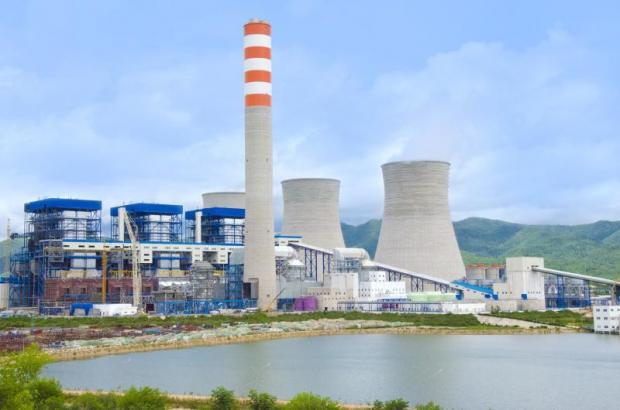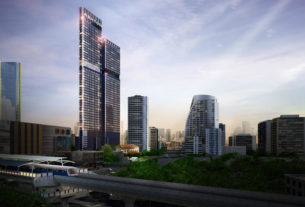
Public hopes are high that khlong water will be purified in the government’s new clean-up project. (File photo by Panupong Changchai)
When one looks at the state of Bangkok canals today, it is hard to imagine that they were once filled with clear, clean water teeming with aquatic life.
Khlongs, as canals are called in Thai, were a ubiquitous feature of Bangkok. No residence was far from a khlong. As a child, I spent time playing in a neighbourhood khlong. But that was a lifetime ago.
Many of the khlongs have since been filled and made into roads. The remaining ones are in a sorry state — having been left to rot, literally, with household sewage and other waste.
Over the years, there have been many attempts to rehabilitate these waterways, but they never amounted to much and what enthusiasm there was quickly faded away.
Now the government has made a proposal that once again raises hope for the khlongs. The cabinet recently instructed the Bangkok Metropolitan Administration and other agencies to implement measures to clean up the khlongs.
These include measures to ensure that households install grease traps and industrial plants are equipped with effective wastewater treatment systems.
Khlong Lat Phrao and Khlong Saen Saep have been targeted in the initial phase of this beautification programme.
In addition to wastewater, Khlong Lat Phrao faces a serious encroachment problem by some 3,000 households over its 24km length.
Relocation of the encroached households has already begun. This is the most difficult phase of the project. Once relocation is complete, work will begin on dredging and constructing flood-prevention dykes along its length.
Work on Khlong Saen Saep is arguably more interesting. The canal runs from Phan Fah in the old city all the way to the Bang Pakong River in Chachoengsao, a distance of more than 70km.
It is Thailand’s longest man-made canal and historically significant. Except for a short stretch within the city, much of its length was dug in the reign of King Rama III as a transport route to engage Vietnamese troops in a minor war.
After the war, it became a major transport and commercial route. Currently, it is the only canal which offers a passenger boat service in Bangkok.
However, passengers cannot but be but painfully aware of the putrid smell emanating from the khlong. Despite this, it still beats land traffic any day. If the canal clean-up can be successfully carried out, the boat ride will be infinitely more pleasant. And it could turn the canal into another popular tourist draw.
The problem of the foul khlong water is being addressed by the construction of a wastewater treatment plant in Bangkok’s outer suburb of Min Buri. But this will only be a partial solution because the worst part of the problem occurs closer to the city, where wastewater treatment remains woefully inadequate.
Though installing a wastewater treatment system is crucial, it is still just a small part of the endeavour. There are so many other causes of the foul khlong discharge urgently in need of an official solution.
First of all, wastewater can flow out of various different sources, and not all of it is directed toward the treatment plant, or is being treated at the source. Currently, less than half of all wastewater in Bangkok is handled by treatment plants.
Secondly, most residences are not equipped with grease traps. We know for a fact that other activities, such as food stalls, restaurants, car washes, commercial establishments and factories, discharge foul water directly into the canals. Rubbish continues to be thrown mindlessly into canals.
So a major part of the programme should be devoted to seeking the cooperation and participation of citizens at all levels. Officials should be mindful that an ambitious beautification program cannot succeed without it.
But experience shows that government agencies are not at their best at using persuasion to win public cooperation. Non-governmental organisations are much more adept at such work.
Bangkok used to have an organisation called the Magic Eye, which achieved phenomenal success raising public awareness about waste management. Government agencies cannot just work among themselves and expect smooth sailing, even with the blessing of the all-powerful National Council for Peace and Order. If you want results, try recruiting help from the non-profit sector.
This is a major programme that, like many other state projects, has been in the planning stage for decades. It was never launched officially because of the scale of the work, the bickering among different agencies and the lack of political will.
Now it appears there is political will. Thanks to the NCPO and Gen Prayut Chan-o-cha, the competing agencies have been brought in line and given money to work together.
There is no more reason to procrastinate. And unlike the Chao Phraya promenade project which has been severely criticised, there’s hardly a peep out of the usual throng of government critics. Bangkok’s khlongs have endured more than half a century of neglect. Now there may be light at the end of the tunnel.
Source: http://www.bangkokpost.com/opinion/opinion/756020/waste-treatment-alone-cannot-purify-putrid-canal-water


